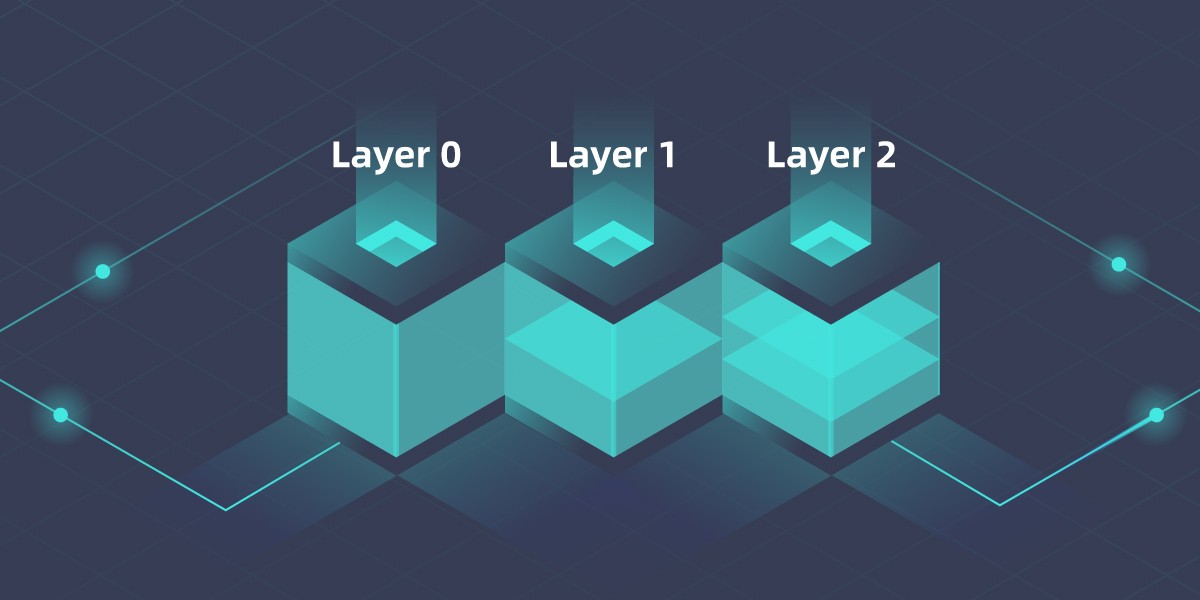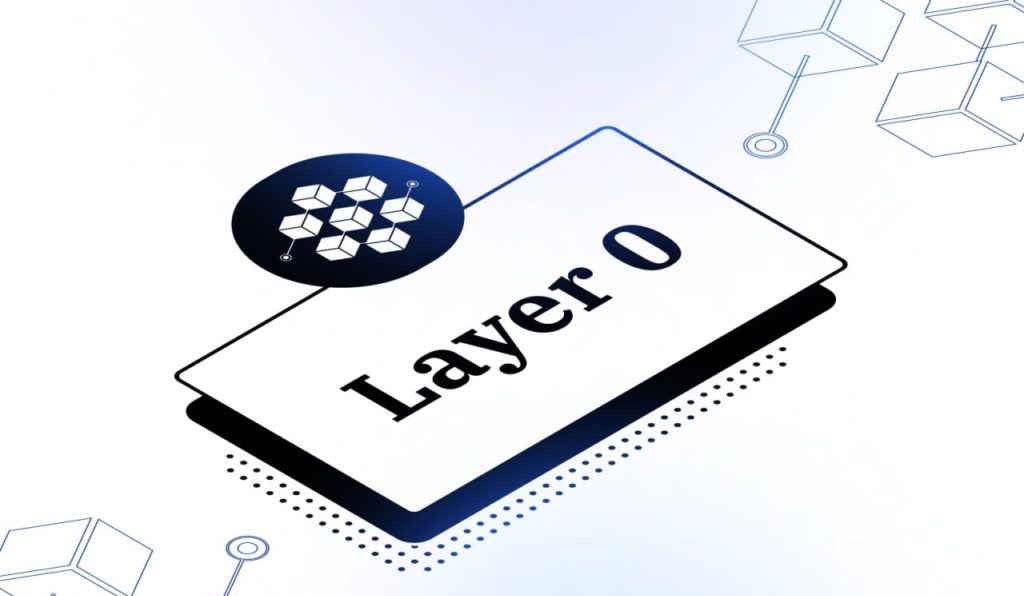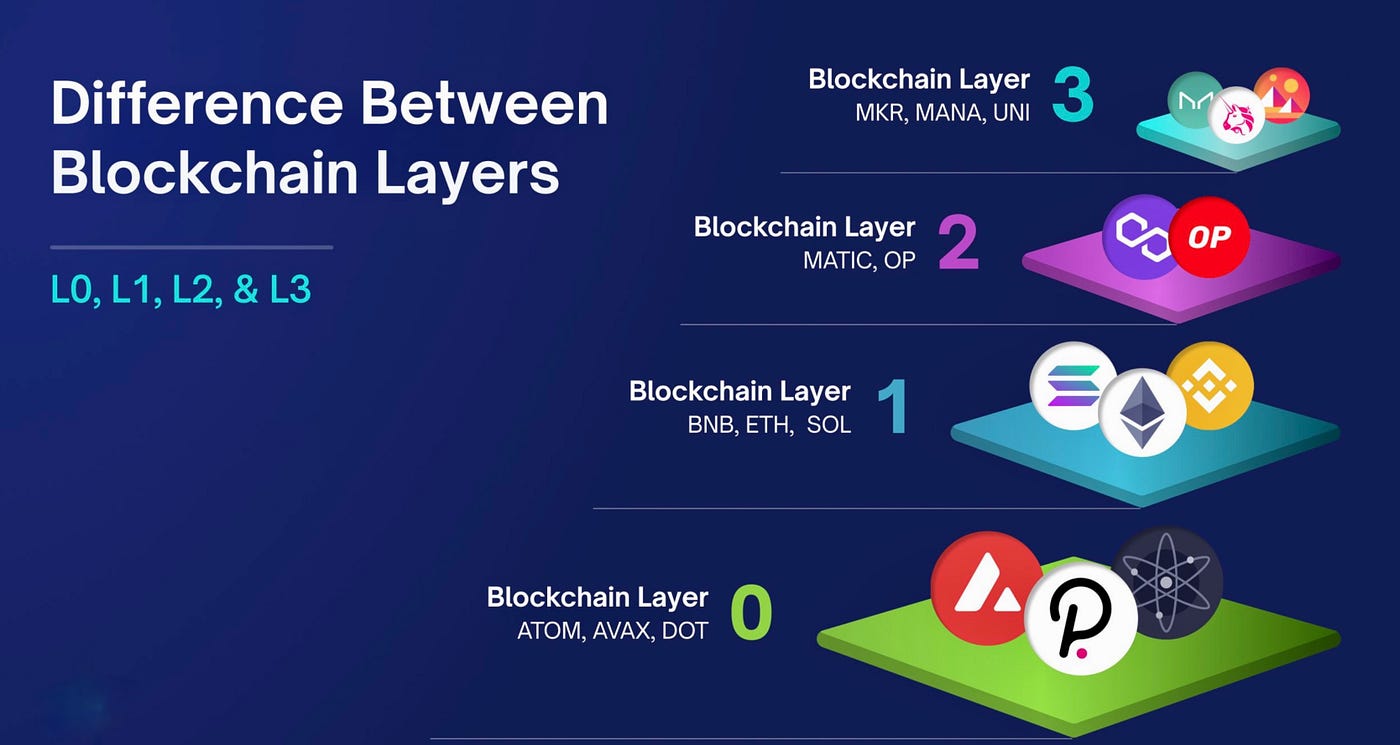
Blockchain technology has fundamentally transformed how we store and manage data. At its core, blockchain is a distributed ledger system that enables secure, transparent, and tamper-proof recording of transactions.
Imagine a shared record-keeping system, where every participant has a copy and any changes must be verified by everyone on the network. It ensures a high level of trust and eliminates the need for a central authority.
In recent years, the potential applications of blockchain technology have exploded. It has led to the development of a complex ecosystem with different layers, each serving specific purposes. These layers work together to address limitations inherent in single-layered systems, such as scalability and interoperability.
We are going to look into the foundational concepts of Layer 0 and Layer 1 protocols within the blockchain architecture.
We’ll explore their functionalities, their relationship with each other, and their significance for the future of blockchain technology. By understanding these layers, you’ll gain a better understanding of how blockchains operate and the exciting possibilities they hold.
Understanding Blockchain Layers: A Multi-Layered Approach
Blockchain technology boasts a sophisticated architecture designed for efficiency and scalability. Unlike traditional single-layered systems, blockchain leverages a multi-layered approach, where each layer tackles specific functionalities. This compartmentalization offers several advantages:
Modular Design: Independent development and improvement are possible for each layer without affecting others. Imagine building upgrades without disrupting existing functionalities.
Scalability: Layers can be scaled independently to address increasing demands. Think of adding lanes to a highway (Layer 1) while simultaneously upgrading traffic management systems (Layer 0).
Flexibility: New functionalities can be introduced by adding new layers, similar to integrating a dedicated navigation system (Layer 4) into your existing car (Layer 1).
Here’s a breakdown of the five primary layers within a blockchain architecture:
Layer 0 (Infrastructure Layer): This layer forms the foundation, providing core protocols for reaching consensus on transactions and enabling communication between blockchains.
Layer 1 (Core Blockchain Layer): This is the base layer where transactions are processed and data is permanently stored. Popular examples include Bitcoin and Ethereum.
Layer 2 (Scaling Layer): Sitting on top of Layer 1, this layer helps process transactions off-chain, alleviating scalability bottlenecks for Layer 1 blockchains. We’ll delve deeper into Layer 2 solutions later.
Layer 3 (Application Layer): This layer focuses on user interaction and development. Here, decentralized applications (dApps) are built to leverage the functionalities of the blockchain.
Layer 4 (Service Layer): This layer builds upon dApps, offering additional services like identity management or oracles that bring external data onto the blockchain.
By separating functionalities into distinct layers, the blockchain ecosystem fosters a modular and adaptable environment. This paves the way for a future where blockchains can handle complex tasks efficiently and integrate seamlessly with various applications.
Exploring Layer 0, Benefits and Example

Layer 0, often referred to as the infrastructure layer, serves as the bedrock of blockchain technology. It provides the fundamental protocols that underpin the operation and security of Layer 1 blockchains, the workhorses where transactions occur. Here’s a closer look at Layer 0’s key functions:
1. Consensus Mechanisms: While Layer 0 does not directly provide consensus mechanisms such as Proof of Work (PoW) or Proof of Stake (PoS), it establishes the rules and incentives for their implementation within the blockchain ecosystem.
These protocols are essential for establishing trust within a decentralized network and determining how participants agree on the current state of the blockchain ledger.
By defining the framework for consensus mechanisms, Layer 0 ensures the security and integrity of the entire blockchain ecosystem, fostering trust among network participants.
A brief look at what PoW and PoS consensus mechanisms are:
Proof of Work (PoW): This well-known mechanism requires miners to solve complex mathematical puzzles to validate transactions. While secure, PoW can be computationally intensive and energy-consuming.
Proof of Stake (PoS): This alternative approach relies on validators who have a stake (ownership) in the cryptocurrency to validate transactions. This reduces energy consumption compared to PoW.
Layer 0 protocols define the rules and incentives for these mechanisms, ensuring the security and integrity of the entire blockchain ecosystem.
2. Interoperability Protocols:
Another critical function of Layer 0 is facilitating communication and data exchange between different blockchains.
Traditionally, blockchains have operated in silos, hindering the seamless flow of information and assets across the ecosystem. Layer 0 protocols aim to bridge this gap by providing interoperability solutions. Here are a couple of examples:
Cosmos IBC (Inter-Blockchain Communication): This protocol allows independent blockchains built on Cosmos to communicate and exchange data securely. It fosters the creation of an “internet of blockchains” where different networks can interact seamlessly.
Polkadot Parachains: Polkadot’s parachains are custom blockchains that connect to the Polkadot relay chain, a secure central chain. It allows parachains to leverage Polkadot’s security while benefiting from its specialized functionalities.
By enabling interoperability, Layer 0 paves the way for a more interconnected and collaborative blockchain landscape which opens doors for innovative applications that can utilize functionalities from multiple blockchains.
Benefits of Layer 0
Layer 0 offers significant advantages for blockchain development:
- Increased Scalability: By separating core functionalities like consensus mechanisms from transaction processing, Layer 0 allows Layer 1 blockchains to scale more efficiently. This paves the way for handling a higher volume of transactions without compromising performance.
- Enhanced Interoperability: Layer 0 protocols break down communication barriers between blockchains. This fosters a more interconnected ecosystem where applications can leverage functionalities from various blockchains, unlocking innovative possibilities.
- Developer Flexibility: Layer 0 provides a modular foundation for developers. They can choose from a wider range of consensus mechanisms and interoperability solutions to build custom blockchains tailored to specific needs.
Examples of Layer 0 Protocols
- Cosmos: This prominent Layer 0 protocol offers the Inter-Blockchain Communication (IBC) protocol, enabling seamless communication and data exchange between independent blockchains built on Cosmos.
- Polkadot: Polkadot provides a secure central chain (relay chain) to which custom blockchains (parachains) can connect. Parachains benefit from Polkadot’s security while maintaining their specialized functionalities.
- Avalanche: Avalanche utilizes a unique consensus mechanism that combines Proof of Stake with directed acyclic graphs (DAGs) to achieve high transaction throughput and scalability.
Layer 1: The Core Blockchain Network

Layer 1, often referred to as the core blockchain layer, forms the foundation upon which transactions occur and data is permanently stored. Think of it as the public ledger at the heart of a blockchain network. Here’s a breakdown of Layer 1’s functionalities:
Transaction Processing and Data Storage
Layer 1 blockchains are responsible for processing and validating transactions. When a transaction is initiated, it’s broadcast to the network.
Miners or validators, depending on the consensus mechanism employed, verify the transaction’s legitimacy and add it to a block. These blocks are then chained together chronologically, forming an immutable and tamper-proof record of all transactions on the network.
Layer 1 also serves as the primary storage location for transaction data. This data can include anything from financial records in a cryptocurrency network to ownership information for digital assets.
Implementation of Consensus Mechanisms and Security
Layer 1 blockchains rely on consensus mechanisms inherited from Layer 0 to ensure network security and agreement on the current state of the ledger.
Popular Layer 0 protocols like Proof of Work (PoW) or Proof of Stake (PoS) are implemented by Layer 1 to validate transactions and prevent malicious activity.
Security features like cryptography and hashing functions further ensure the integrity of the data stored on Layer 1. These features make it virtually impossible to tamper with or alter transaction records once they’ve been added to the blockchain.
Supporting Decentralized Applications (dApps)
Layer 1 blockchains act as the platform upon which decentralized applications (dApps) are built. dApps are applications that operate on a peer-to-peer network, eliminating the need for a central authority. They leverage the functionalities of Layer 1, such as secure transaction processing and data storage, to provide a wide range of services. Examples of dApps include DeFi (Decentralized Finance) applications for lending and borrowing, or NFT marketplaces for trading digital collectibles.
The Interplay Between Layers
While Layer 1 forms the core of a blockchain, it’s important to remember its limitations. Scalability and interoperability can be challenges for individual Layer 1 blockchains.
This is where Layer 0 and Layer 2 solutions come into play. Layer 0 provides the foundational protocols for consensus and interoperability, while Layer 2 solutions built on top of Layer 1 can help address scalability bottlenecks. Together, these layers create a robust and adaptable blockchain ecosystem.
Examples and Challenges of Layer 1 Blockchains

Here are some prominent Layer 1 blockchains and their core functionalities:
- Bitcoin: Bitcoin serves as a decentralized digital currency that enables secure and transparent peer-to-peer transactions without the need for intermediaries. It provides a censorship-resistant store of value and a medium of exchange. The Lightning Network is a layer 2 scaling solution built on top of the Bitcoin blockchain. It enables instant and low-cost transactions by conducting them off-chain, alleviating congestion and reducing fees on the main Bitcoin network.
- Ethereum: Ethereum’s layer 1 protocol allows developers to build decentralized applications (dApps) and deploy smart contracts. These applications can range from decentralized finance (DeFi) platforms to decentralized exchanges (DEXs) and non-fungible token (NFT) marketplaces. Uniswap is a decentralized exchange protocol built on Ethereum. It enables users to swap various ERC-20 tokens directly from their Ethereum wallets without the need for intermediaries or order books, providing liquidity to the Ethereum ecosystem.
- Solana: Known for its high transaction throughput and scalability, Solana aims to address limitations faced by other Layer 1 blockchains.
- Cardano: This Layer 1 blockchain prioritizes security and scalability through a unique Proof-of-Stake consensus mechanism.
Challenges of Layer 1 Blockchains
While Layer 1 blockchains offer a secure and transparent foundation, they face certain limitations:
- Scalability Issues: As the number of users and transactions on a Layer 1 network increases, processing times can slow down and transaction fees can rise. This can hinder mainstream adoption.
- Interoperability Bottlenecks: Traditionally, blockchains operate in silos, limiting communication and data exchange between them. This can restrict the flow of information and assets across the ecosystem.
The Relationship Between Layer 0 and Layer 1
Layer 0 and Layer 1 work in tandem to form the backbone of blockchain technology. Here’s a breakdown of their collaborative relationship:
- Layer 0 The Foundation: Think of Layer 0 as the underlying infrastructure. It provides the core protocols for consensus mechanisms (like Proof of Work or Proof of Stake) and interoperability solutions. These protocols establish trust and enable communication between different blockchains.
- Layer 1 Building Upon the Foundation: Layer 1 blockchains leverage the functionalities provided by Layer 0. They implement consensus mechanisms inherited from Layer 0 to validate transactions and secure the network. Additionally, Layer 1 blockchains can utilize interoperability protocols from Layer 0 to communicate with other networks if supported.
The Future of Layer 0 and Layer 1
The realm of Layer 0 and Layer 1 protocols is constantly evolving. Here’s a glimpse into what the future might hold:
Advanced Interoperability Solutions: New Layer 0 protocols are being developed to focus on seamless communication between blockchains. This could lead to a more interconnected ecosystem where applications can leverage functionalities across various Layer 1 networks.
Scalable and Secure Blockchain Ecosystems: Ongoing research into consensus mechanisms and network architectures aims to address the scalability limitations of Layer 1 blockchains. This will pave the way for secure and efficient handling of high transaction volumes.
Developer-Friendly Tools: As the blockchain ecosystem matures, we can expect the development of more user-friendly tools for building and deploying applications on Layer 1 blockchains. This will further accelerate innovation and attract more developers to the space.
Closing Thoughts
Layer 0 and Layer 1 protocols form the core building blocks of a secure, transparent, and decentralized future. Understanding their functionalities and their collaborative relationship is crucial for anyone interested in the potential of blockchain technology.
By addressing limitations and fostering innovation, these layers hold the key to unlocking the full potential of blockchain, shaping a future where trustless transactions, secure data storage, and decentralized applications can revolutionize various industries.




